Published: 2013-05-20
Reviews: 7104
State Holidays.
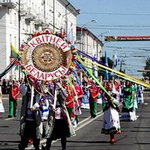 Holidays are the best way to help us shake off the routine and everyday life. For each of us it is a long-awaited date when you can have a rest and relax. A special place in the calendar belongs to state holidays, which, being an essential symbol of the sovereignty and identity of Belarusian state, are celebrated in every family.
Holidays are the best way to help us shake off the routine and everyday life. For each of us it is a long-awaited date when you can have a rest and relax. A special place in the calendar belongs to state holidays, which, being an essential symbol of the sovereignty and identity of Belarusian state, are celebrated in every family.
January, 1 – the New Year (a day off).
 Most scientists are convinced that the tradition of celebrating the New Year originated in the third millennium BC in Mesopotamia. Then the symbol of the New Year was the beginning of the agricultural work that fell at the end of March. The celebration took 12 days, during which there were carnivals, masquerades, symbolizing the victory of the light over the darkness. At this time, it was forbidden not only to work but also to punish people for their misdeeds. For the first time they began to celebrate the New Year on January, 1 in Rome in 46 BC by Emperor Julius Caesar.
Most scientists are convinced that the tradition of celebrating the New Year originated in the third millennium BC in Mesopotamia. Then the symbol of the New Year was the beginning of the agricultural work that fell at the end of March. The celebration took 12 days, during which there were carnivals, masquerades, symbolizing the victory of the light over the darkness. At this time, it was forbidden not only to work but also to punish people for their misdeeds. For the first time they began to celebrate the New Year on January, 1 in Rome in 46 BC by Emperor Julius Caesar.
In ancient Belarus, the New Year was also celebrated in March. However, in 1492, the New Year was postponed to September, 1. The celebration was not even mentioned, because that day people paid tribute and duties. Only thanks to Peter I the New Year was celebrated on January, 1 according to European traditions. It was also ordered to decorate houses and streets with pine and fir branches, and congratulate each other and present gifts.
This winter festival has its essential attributes, without which it is difficult to imagine the modern New Year: a beauty-fir is decorated in every home with colorful balloons and garlands, and on the street you can meet Grandfather Frost with his granddaughter Snow Maiden.
You can surely say that the New Year is a truly family holiday. In a festive night it is usual to gather the whole family for the New Year's table, which is just full of the richness and variety of dishes, congratulate each other and present gifts.
But before celebrating the New Year, the guests "escort" the outgoing year, remembering anniversaries and events. With the first chime of bells of the coming year, pouring bubbly champagne in the wineglasses, you should make a wish that will come true in the new year.
In Belarus, the New Year has long been a popular holiday and not just because the New Year's days are accompanied by massive festivals, games and entertainment. After all, long before the holiday, the New Year miracles and gifts are awaited to not only by kids, but adults also.
February, 23 – the Day of the Fatherland Defender and the Armed Forces of the Republic of Belarus.
The history of the holiday roots to distant 1918, when the Workers 'and Peasants' Red Army (January, 28) and the Workers 'and Peasants' Red Navy (February, 11) was organized. Soon, on February, 18, Russia was attacked by the Turkish and German troops. After 3 days they occupied Minsk. However, only on February, 23 1918 the Red Army won its first victory in the battles near Pskov and Narva. And in this regard, on February 23, a solemn celebration of the Red Army was held in Petrograd to raise the patriotic spirit. But the Red Army Day became a public holiday only in 1922. And since 1946, the festival was renamed the Day of the Soviet Army and Navy. After the Soviet Union collapsed, the holiday got another name - the Day of the Fatherland Defender.
March, 8 – the International Women's Day (a day off).
 The prehistory of this spring holiday is by no means holiday, but rather politicized. The fact is that, initially, this date was the day of the fight for women's rights around the world. It all started with the fact that on March, 8 1857 women working in garment and shoe factories went on strike on the streets of New York. They demanded a 10-hour day, decent wages and reasonable working conditions. And in 1910, at the International Conference in Copenhagen, Clara Zetkin offered to celebrate International Women's Day on March, 8 in honour of the occasion of this event. From the tribune it sounded like a call to the women of the world to join the international fight for their rights.
The prehistory of this spring holiday is by no means holiday, but rather politicized. The fact is that, initially, this date was the day of the fight for women's rights around the world. It all started with the fact that on March, 8 1857 women working in garment and shoe factories went on strike on the streets of New York. They demanded a 10-hour day, decent wages and reasonable working conditions. And in 1910, at the International Conference in Copenhagen, Clara Zetkin offered to celebrate International Women's Day on March, 8 in honour of the occasion of this event. From the tribune it sounded like a call to the women of the world to join the international fight for their rights.
Throughout the world, the holiday has become celebrated since 1912, and a year later it was celebrated in Belarus. With the coming of the Soviet power, this date was declared a state holiday, and since 1965, March, 8 was recognized as a day off.
Although, many researchers say that this festival has its roots in the history of the ancient Rome, when special honours and concern this day was given to free-born married women - matrons who had children and kept the house.
In Belarus it is one of the most honoured holidays, especially among women. Since this day women get everything at once - care, affection, attention, and, of course, gifts from beloved men. In this day it is usual to congratulate wives, mothers, darling girls and colleagues with not only flowers, but also gifts. Even the most compliments-avid men in that day, as if having studied pages of dictionaries, shower the beautiful half of humanity with compliments and praises. But then again, they go underground, fueling their eloquence to finish the most important phrases again a year later, on March 8, that hold life, family, love ...
March, 15 – the Constitution Day of the Republic of Belarus.
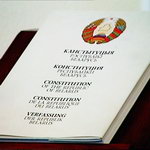 This day appeared in the list of state holidays in 1998. Although like any other holiday, the Constitution Day of the Republic of Belarus has its own prehistory. It started on February, 3 1919 - that day was the first Constitution of the Soviet Socialist Republic of Belarus was accepted. However, after this the Constitution in the Soviet Belarus was accepted a few more times - in 1927, in 1937 and in 1978.
This day appeared in the list of state holidays in 1998. Although like any other holiday, the Constitution Day of the Republic of Belarus has its own prehistory. It started on February, 3 1919 - that day was the first Constitution of the Soviet Socialist Republic of Belarus was accepted. However, after this the Constitution in the Soviet Belarus was accepted a few more times - in 1927, in 1937 and in 1978.
After the collapse of the USSR, the independent Belarus needed a new document that would regulate the activities of the state in the modern world. Therefore, already on March, 15 1994 a completely new constitution was adopted, which still has not lost its relevance and remains the main legal basis in the independent Belarus. However, in 1996 and 2004, the necessary changes and additions were made in the document due to the modern life. Today the Belarusian Constitution includes 9 sections, consisting of eight chapters and 146 articles. The basic law of the Belarusian State registered not only the principles of the political system and the electoral system, but also the rights and obligations of the citizens of Belarus.
April, 2 – the Day of the Unity of the Peoples of Belarus and Russia.
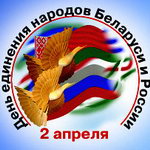 It is a relatively young Belarusian holiday, the appearance of which was dictated by the time. The story of the holiday begins with 1996, when on April, 2 an agreement "On the formation of the Community of Russia and Belarus" was signed between the presidents of Russia and Belarus - Boris Eltsin and Alexander Lukashenko. A year later, the two leaders signed the Treaty of the Union of Belarus and Russia. The Union State was created a few years later, on December, 8 1999, as evidenced by the relative document. The signed agreement said about the gradual and voluntary union of two states, while maintaining national sovereignty.
It is a relatively young Belarusian holiday, the appearance of which was dictated by the time. The story of the holiday begins with 1996, when on April, 2 an agreement "On the formation of the Community of Russia and Belarus" was signed between the presidents of Russia and Belarus - Boris Eltsin and Alexander Lukashenko. A year later, the two leaders signed the Treaty of the Union of Belarus and Russia. The Union State was created a few years later, on December, 8 1999, as evidenced by the relative document. The signed agreement said about the gradual and voluntary union of two states, while maintaining national sovereignty.
In the political life of the country April, 2 day does not goes unnoticed: every time this state holiday is held with great solemnity and with the obligatory participation of the leaders of the Union State.
May, 1 – the Labour Day (day off).
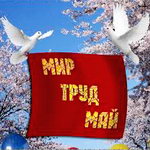 The impulse for the spring festival was a strike of American workers on May, 1 1886 - the pages of history of the holiday repeat this faithfully. The strike was far from peaceful - and as a result a clash with the police and many victims. And three years later Paris International Congress II decided to conduct an annual May, 1 demonstration in the memory of the incident. Beginning with the 1890 the festival has been celebrated around the world.
The impulse for the spring festival was a strike of American workers on May, 1 1886 - the pages of history of the holiday repeat this faithfully. The strike was far from peaceful - and as a result a clash with the police and many victims. And three years later Paris International Congress II decided to conduct an annual May, 1 demonstration in the memory of the incident. Beginning with the 1890 the festival has been celebrated around the world.
In Belarus, as in Russia, it was called the Day of International Solidarity of Workers. Originally, in this day the workers came together out of town, but since 1897 the festival has acquired political overtones and its characteristic feature became mass demonstrations. Beginning with 1917, demonstrations were held under the banner of the Communist Party, "All power to the Councils!"
The tradition of mass celebration of this spring festival has taken root in the Soviet Union. Celebrations, which took two days off, were held throughout the country. Workers in holiday clothes went on the streets with flowers and banners. The logical conclusion of the solemn and joyful day became a festive table. After the collapse of the Soviet Union the holiday has remained, though under another name – the Labour Day.
There is another version of the origin of the holiday. It has a pagan beginning and roots in the distant past. It turns out that the name of the month originates from the earth and fertility goddess Maia praised by people of the Ancient Italy. After the planting ancient Italians celebrated May Day everywhere to get a good harvest for their hard work.
The modern Belarusian Mayday has no political and revolutionary attributes, it is a spring state holiday, which is eagerly expected in every home.
May, 9 – the Victory Day (day off).
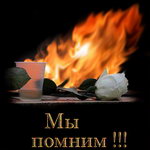 Today it is one of the most honoured Belarusian state holidays. The history the memorable day goes back to 1945, when the Soviet troops came close to Berlin. But despite the fact that the German army was well prepared for the upcoming attack, the Soviet troops still occupied the Reichstag. It happened at night on April, 29. The military operation was a success, but with huge losses: the losses of the Red Army every day were enormous - more than 15,000 officers and soldiers perished in the battles! However, on May 1, the red flag graced on the roof of the Reichstag, and on May, 9 Germany surrendered unconditionally. On June, 24 the first grand victory parade was held in Moscow with the participation of the two marshals - Konstantin Rokossovsky and Georgy Zhukov. Initially, May, 9 was declared a day off. In 1948, it became a working day, it got the status of the day off not soon - only in 1965.
Today it is one of the most honoured Belarusian state holidays. The history the memorable day goes back to 1945, when the Soviet troops came close to Berlin. But despite the fact that the German army was well prepared for the upcoming attack, the Soviet troops still occupied the Reichstag. It happened at night on April, 29. The military operation was a success, but with huge losses: the losses of the Red Army every day were enormous - more than 15,000 officers and soldiers perished in the battles! However, on May 1, the red flag graced on the roof of the Reichstag, and on May, 9 Germany surrendered unconditionally. On June, 24 the first grand victory parade was held in Moscow with the participation of the two marshals - Konstantin Rokossovsky and Georgy Zhukov. Initially, May, 9 was declared a day off. In 1948, it became a working day, it got the status of the day off not soon - only in 1965.
The independent Belarusian state declares particular attention to this spring holiday, which symbolizes freedom and independence. From year to year the Victory Day starts with a military parade, lasting with mass celebrations in all corners of the country. The celebration of the anniversary date completes with salute. It lights the night sky with millions of sparks, as if recalling those who gave his life in the name of Victory.
May, 12 (valid for 2013) – the Day of the National Flag and the Coat of Arms of the Republic of Belarus.
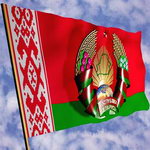 In Belarus, this spring holiday, symbolizing independence, is treated in trembling. The coat of arms and the flag are inherent symbols of the sovereignty not only for Belarus, but also of any other state. Their symbolism gives us the historical way of the country, it allows learn the ideas and intentions, and also talks about the chosen path to self-realization and prosperity.
In Belarus, this spring holiday, symbolizing independence, is treated in trembling. The coat of arms and the flag are inherent symbols of the sovereignty not only for Belarus, but also of any other state. Their symbolism gives us the historical way of the country, it allows learn the ideas and intentions, and also talks about the chosen path to self-realization and prosperity.
Belarusian flag is divided into two horizontal coloured stripes: the top is red, the bottom is green. Sidewise, near the flagpole, the flag is decorated with red national ornament, on a white field. The state coat of arms depicts the green outline of Belarus in the rays of the rising sun, which is crowned with a five-pointed star. The coat of arms is framed with golden ears, entwined with a red and green film. Below the inscription "Рэспублiка Беларусь" (The Republic of Belarus) is showed. The symbolism of flowers depicted on the coat of arms and the flag, talks about the bloody path to the Victory, hope and rebirth, as well as the spiritual purity of the Belarusians.
This state holiday is celebrated on the second Sunday in May.
July, 3 – the Independence Day of the Republic of Belarus (day off).
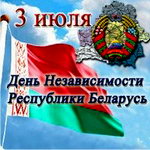 This is probably the most important Belarusian holiday. The history of this day is associated with the tragic and at the same time of joyful date in the Belarusian history: on July, 3 1944 Minsk was liberated from German invaders. Initially, July, 27 was announced the Independence Day but since 1996, after a referendum a new date - July 3 – appeared in Belarusian calendar of events.
This is probably the most important Belarusian holiday. The history of this day is associated with the tragic and at the same time of joyful date in the Belarusian history: on July, 3 1944 Minsk was liberated from German invaders. Initially, July, 27 was announced the Independence Day but since 1996, after a referendum a new date - July 3 – appeared in Belarusian calendar of events.
This festival is held in Belarus on grand scale, and the most memorable part of the festive day is a parade with a demonstration of military equipment. In the afternoon mass celebrations are held in every corner of the country, and late in the evening a salute resumes the extravagant celebration of the Independence Day, which illuminates the faces of happy and inspired citizens of a free and independent state with millions of lights.
In Vitebsk, this state holiday is held on no less grand scale: the city navigates mass festivities with concerts, competitions, flash mobs and promotions.
September, 1 – the Knowledge Days.
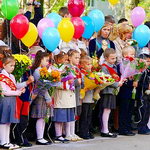 This solemn day in the calendar of events symbolizes the beginning of a new school year, but has particular importance and memorable for first year pupils - it was the very first time when the sound of the first bell becomes particularly anxious and memorable.
This solemn day in the calendar of events symbolizes the beginning of a new school year, but has particular importance and memorable for first year pupils - it was the very first time when the sound of the first bell becomes particularly anxious and memorable.
We have borrowed the tradition of starting the school year on September 1 from Byzantium - in the Middle Ages on that day they celebrated the new year. It symbolized the end of the field work and the beginning of the autumn-winter calm.
However, there had been no specific date of the new school year for a long time: it started it on August, 20, October, 15 and distant rural schools started the school year even on December, 1. This lasted until September 1935 when the Soviet government issued a decree that the school year starts on September, 1.
Initially, as the history of the holiday evidences, this day was a training one and passed without a solemn assembly. It was only since 1984, it begins with celebrations. On this day, not only in Vitebsk schools, but also all over the country, the first bell is ringing, clear and happy voices of dress-up pupils could be heard everywhere which hurry to congratulate their teachers with exquisite bouquets of flowers.
October, 14 – the Mother Day.
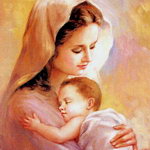 The history of the holiday lies in trembling and exciting relationship to the mother, which has been passed for centuries from generation to generation. That`s why the holding of this celebration not coincidentally coincides with the religious ceremony: the fact is that on October, 14 the Orthodox church celebrates the Holy Protection of the Blessed Virgin Mary.
The history of the holiday lies in trembling and exciting relationship to the mother, which has been passed for centuries from generation to generation. That`s why the holding of this celebration not coincidentally coincides with the religious ceremony: the fact is that on October, 14 the Orthodox church celebrates the Holy Protection of the Blessed Virgin Mary.
Although, this state holiday has appeared in our country only recently, it is just the date, to which no one can remain indifferent. On this day, people say warm thanks to Mothers who constantly give love, care and affection to their children, as well as present commemorative and symbolic gifts to them.
November, 7 – the Day of the October Revolution (day off).
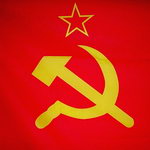 During the Soviet times, it was the country's most important holiday, which was celebrated with particular splendor. In the Soviet times it was called the Day of the Great October Socialist Revolution. And it was no wonder, because just on the night of November, 7 to 8 1917 in Petrograd an uprising began, which culminated in a socialist revolution that will mark the development of not only Belarus, but also of the states in the whole world. Workers captured the Winter Palace and proclaimed the Soviet power. The country began to celebrate this day immediately. The canon of the state holiday finally took shape only during Stalin power: on this day demonstrations were held, and in the capitals of the republics there were solemn parades.
During the Soviet times, it was the country's most important holiday, which was celebrated with particular splendor. In the Soviet times it was called the Day of the Great October Socialist Revolution. And it was no wonder, because just on the night of November, 7 to 8 1917 in Petrograd an uprising began, which culminated in a socialist revolution that will mark the development of not only Belarus, but also of the states in the whole world. Workers captured the Winter Palace and proclaimed the Soviet power. The country began to celebrate this day immediately. The canon of the state holiday finally took shape only during Stalin power: on this day demonstrations were held, and in the capitals of the republics there were solemn parades.
In Vitebsk, the solemn day of November, 7 also does not pass unnoticed. However, in the modern Belarusian state this holiday has lost political overtones and gets more and more features of a family holiday when the whole family can come together and share nice memories.





